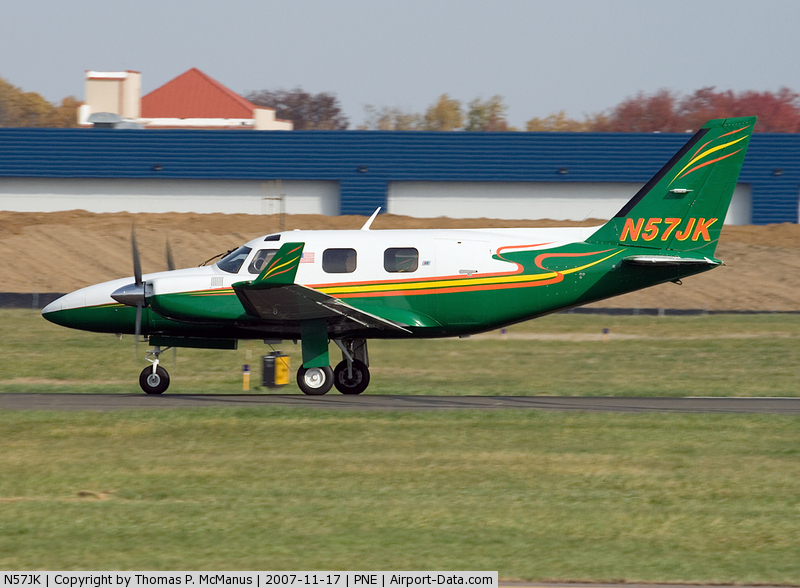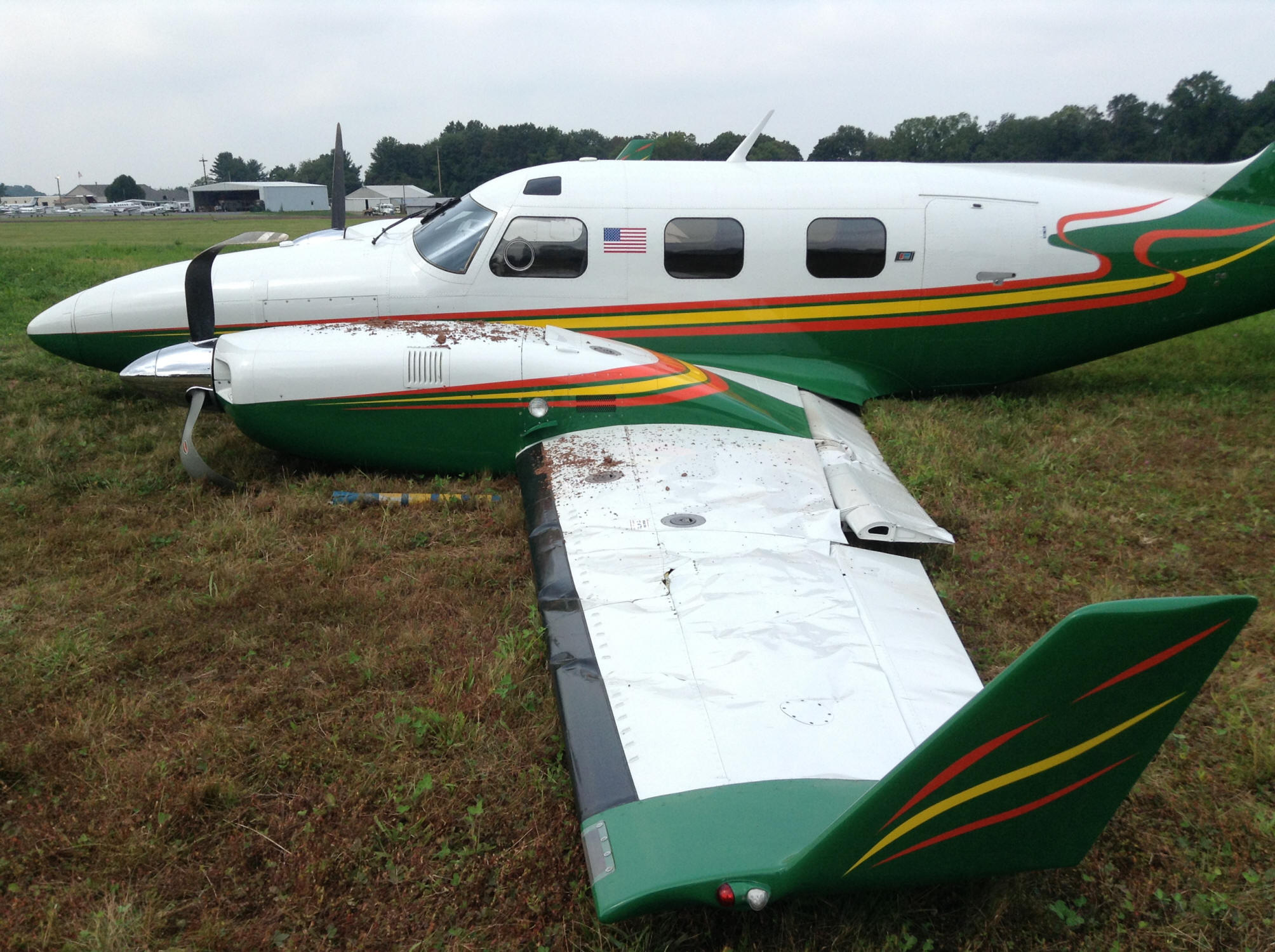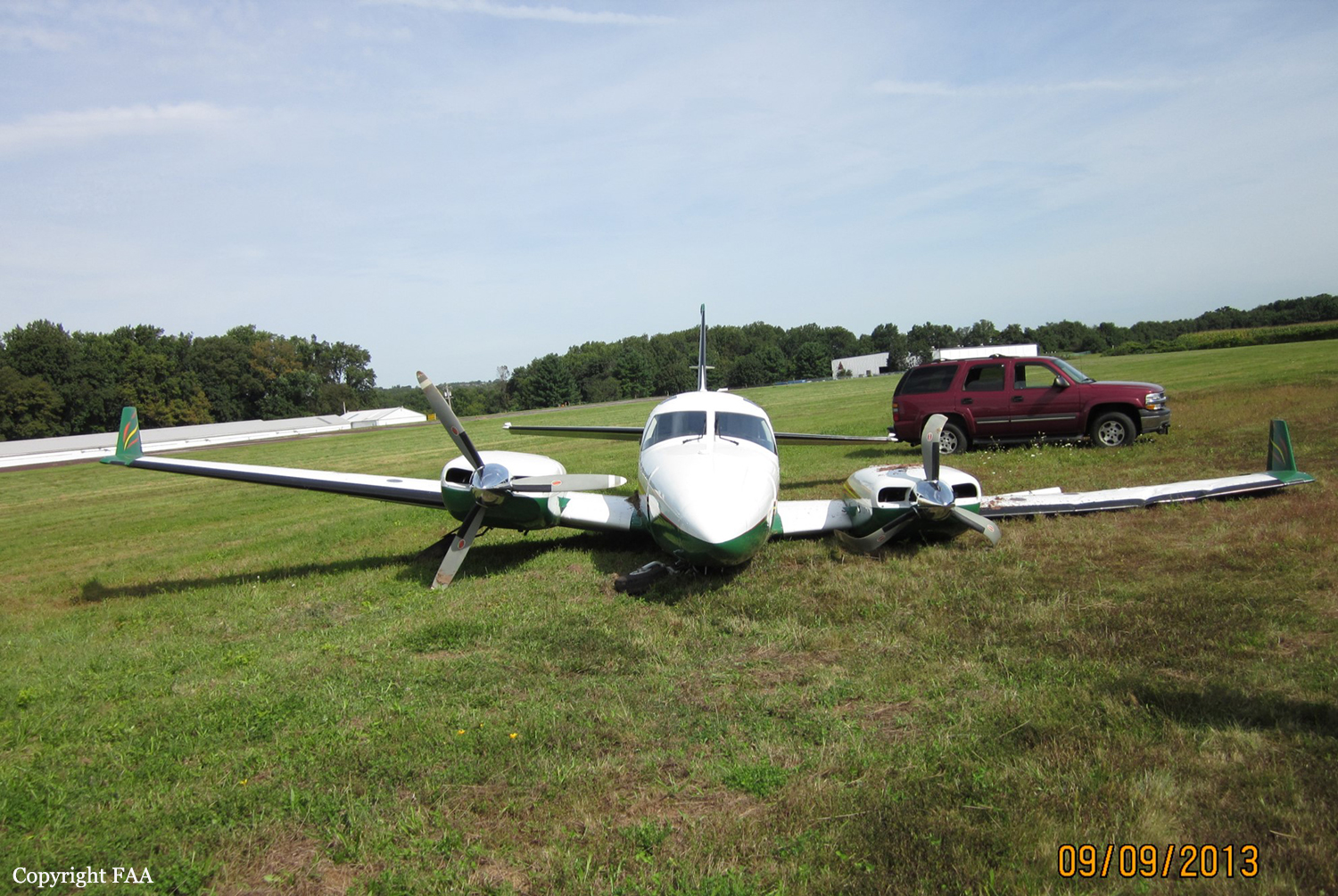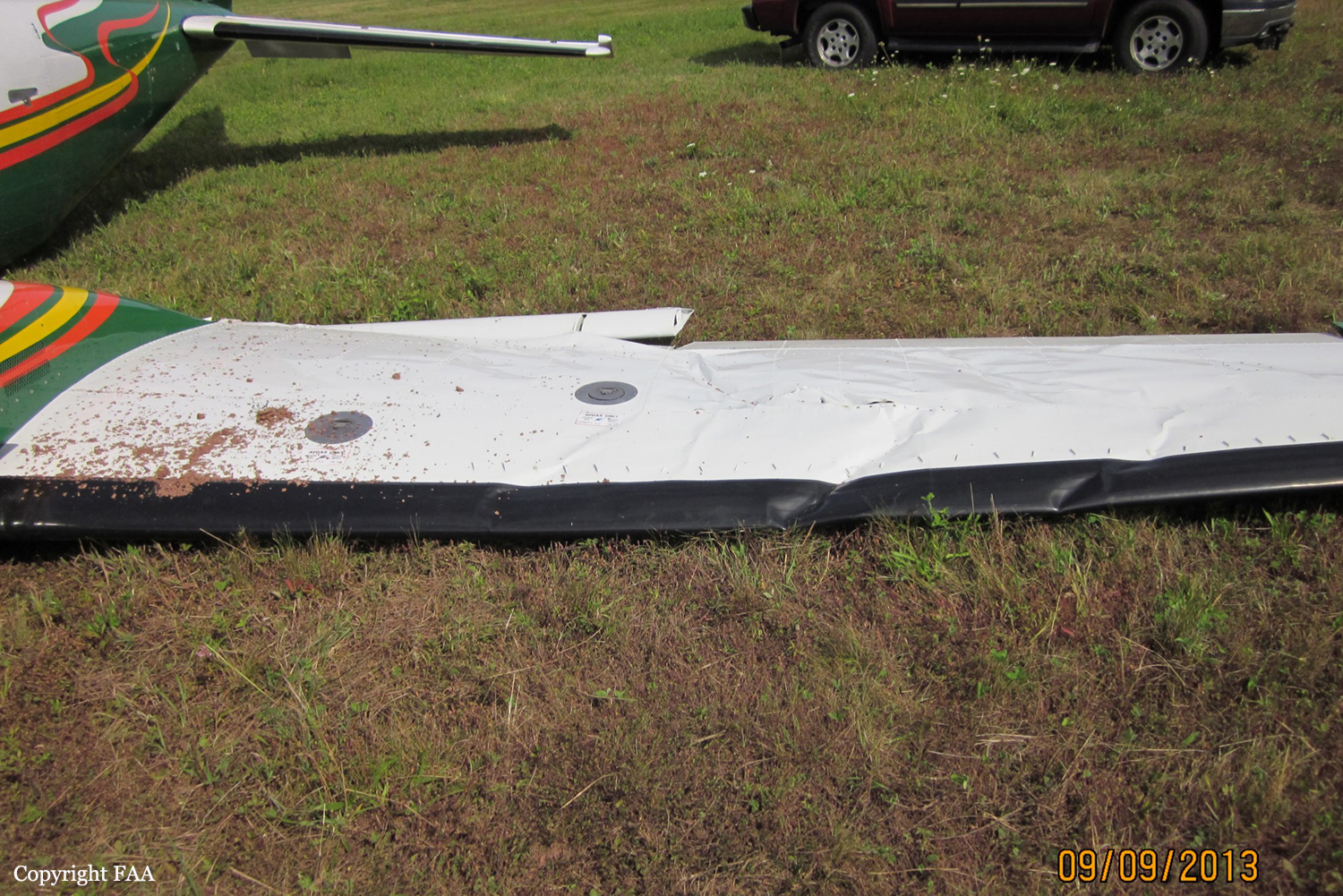Zone
Crash of a Britten-Norman BN-2A-20 Islander in West Portal: 1 killed
Date & Time:
Dec 8, 2018 at 0828 LT
Registration:
VH-OBL
Survivors:
No
Schedule:
Cambridge – Bathurst Harbour
MSN:
2035
YOM:
1986
Crew on board:
1
Crew fatalities:
Pax on board:
0
Pax fatalities:
Other fatalities:
Total fatalities:
1
Captain / Total hours on type:
80.00
Aircraft flight hours:
12428
Circumstances:
On 8 December 2018, the pilot of a Pilatus Britten-Norman BN2A-20 Islander, registered VH-OBL and operated by Airlines of Tasmania, was conducting a positioning flight under the visual flight rules from Cambridge Airport to the Bathurst Harbour aeroplane landing area (ALA), Tasmania. The aircraft departed Cambridge at about 0748 Eastern Daylight-saving Time and was scheduled to arrive at Bathurst Harbour about 0830 to pick up five passengers for the return flight. The passengers were part of a conservation project that flew to south-west Tasmania regularly, and it was the pilot’s only flight for that day. Automatic dependent surveillance broadcast (ADS-B) position and altitude data (refer to the section titled Recorded information) showed the aircraft tracked to the south-west towards Bathurst Harbour (Figure 1). At about 0816, the aircraft approached a gap in the Arthur Range known as ‘the portals’. The portals are a saddle (lowest area) between the Eastern and Western Arthur Range, and was an optional route that Airlines of Tasmania used between Cambridge and Bathurst Harbour when the cloud base prevented flight over the mountain range. After passing through the portals, the aircraft proceeded to conduct a number of turns below the height of the surrounding highest terrain. The final data point recorded was at about At about 0829, the Australian Maritime Safety Authority received advice that an emergency locator transmitter allocated to VH-OBL had activated. They subsequently advised the Tasmanian Police and the aircraft operator of the activation, and initiated search and rescue efforts. The rescue efforts included two helicopters and a Challenger 604 search and rescue jet aircraft. The Challenger arrived over the emergency locator transmitter signal location at around 0925, however, due to cloud cover the crew were unable to visually identify the precise location of VH-OBL. A police rescue helicopter arrived at the search area at about 1030. The pilot of that helicopter reported observing cloud covering the eastern side of the Western Arthur Range, and described a wall of cloud with its base sitting on the bottom of the west portal. Multiple attempts were made throughout the day to locate the accident site, however, due to low-level cloud, and fluctuating weather conditions, the search and rescue operation was unable to confirm visual location of the aircraft until about 1900. The aircraft wreckage was found in mountainous terrain of the Western Arthur Range in the Southwest National Park (Figure 2) . The search and rescue crew assessed that the accident was unlikely to have been survivable. The helicopter crew considered winching personnel to the site, however, due to a number of risks, including potential for cloud reforming, the time of day and lighting, and other hazards associated with the mountainous location, the helicopter departed the area. The aircraft wreckage was accessed the following day, when it was confirmed that the pilot was fatally injured.
Probable cause:
From the evidence available, the following findings are made with respect to the controlled flight into terrain involving Pilatus Britten-Norman BN2A, VH-OBL, 101 km west-south-west of Hobart, Tasmania, on 8 December 2018.
Contributing factors:
• The pilot continued descending over the Arthur Range saddle to a lower altitude than previous flights, likely due to marginal weather. This limited the options for exiting the valley surrounded
by high terrain.
• While using a route through the Arthur Range due to low cloud conditions, the pilot likely encountered reduced visual cues in close proximity to the ground, as per the forecast conditions. This led to controlled flight into terrain while attempting to exit the range.
Contributing factors:
• The pilot continued descending over the Arthur Range saddle to a lower altitude than previous flights, likely due to marginal weather. This limited the options for exiting the valley surrounded
by high terrain.
• While using a route through the Arthur Range due to low cloud conditions, the pilot likely encountered reduced visual cues in close proximity to the ground, as per the forecast conditions. This led to controlled flight into terrain while attempting to exit the range.
Final Report:



Crash of a Piper PA-31P Pressurized Navajo in Doylestown
Date & Time:
Sep 8, 2013 at 1030 LT
Registration:
N57JK
Survivors:
Yes
Schedule:
Cambridge - Doylestown
MSN:
31-7530020
YOM:
1975
Crew on board:
1
Crew fatalities:
Pax on board:
0
Pax fatalities:
Other fatalities:
Total fatalities:
0
Captain / Total hours on type:
1054.00
Aircraft flight hours:
3952
Circumstances:
Following a normal landing, the pilot felt no wheel braking action on the left wheel, and the brake pedal went to the floor. The pilot attempted to maintain directional control; however, the airplane departed the right side of the runway and traveled into the grass. The landing gear collapsed, and the airplane came to a stop, sustaining structural damage to the left wing spar. Postaccident examination confirmed that the left brake was inoperative and revealed a small hydraulic fluid leak at the shaft of the parking brake valve in the pressurized section of the cabin. Air likely entered the brake line at the area of the leak while the cabin was pressurized, rendering the left brake inoperative.
Probable cause:
A leaking parking brake valve, which allowed air to enter the left brake line and resulted in the eventual failure of the left wheel brake during the landing roll.
Final Report:




Crash of a Cessna 421B Golden Eagle II in Stansted: 1 killed
Date & Time:
Sep 4, 1978 at 1518 LT
Registration:
G-AYMM
Survivors:
Yes
Schedule:
Cambridge - Stansted
MSN:
421B-0033
YOM:
1970
Crew on board:
2
Crew fatalities:
Pax on board:
0
Pax fatalities:
Other fatalities:
Total fatalities:
1
Captain / Total hours on type:
1401.00
Aircraft flight hours:
2472
Circumstances:
The aircraft was engaged upon a flight test for the renewal of its Certificate of Airworthiness (CofA). The sole occupants were the pilot and an observer. Following an ILS approach to runway 23 at Stansted Airport an overshoot (go-around) was initiated and at about 200 feet the starboard engine cut out. The commander attempted unsuccessfully to restart the engine by use of the starter motor. The aircraft lost speed and height and crashed just outside the airport. The observer was killed and the pilot injured.
Probable cause:
The accident was caused by the pilot failing to feather the propeller and raise the flaps after the starboard engine had cut during an overshoot manoeuvre. A contributory factor is considered to have been the absence of any prescribed procedure in the Flight Manual to meet this eventuality. The reason for the malfunction of the starboard engine both during the stall test and later during the overshoot could not be determined.
Final Report:
Crash of an Airspeed AS.10 Oxford I in Cambridge: 1 killed
Date & Time:
Jan 3, 1943
Registration:
V3888
Survivors:
No
Schedule:
Cambridge - Cambridge
Crew on board:
1
Crew fatalities:
Pax on board:
0
Pax fatalities:
Other fatalities:
Total fatalities:
1
Circumstances:
Shortly after a night takeoff from Cambridge Airport, while in initial climb, one of the engine failed. The pilot attempted to make an emergency landing but the aircraft hit a tree and crashed onto a house. The pilot was killed while there were no casualties on the ground.
Crew (5th FPP):
P/O Irene Arckless, pilot.
Crew (5th FPP):
P/O Irene Arckless, pilot.
Probable cause:
Engine failure after takeoff.
Crash of an Airspeed AS.10 Oxford I in Loch Laidon
Date & Time:
Mar 2, 1942
Registration:
L4597
Survivors:
Yes
Schedule:
Cambridge – Kinloss
MSN:
0064
YOM:
1938
Crew on board:
1
Crew fatalities:
Pax on board:
0
Pax fatalities:
Other fatalities:
Total fatalities:
0
Circumstances:
The pilot was in charge to convoy the airplane from Cambridge to RAF Kinloss for maintenance. While cruising in poor weather conditions over Scotland, the right engine failed. Unable to maintain the prescribed altitude, the pilot attempted an emergency landing on the frozen Loch Laidon and the airplane came to rest near the shore. The pilot found help and was later transferred to his base while the airplane was damaged beyond repair.
Crew:
William Silver Edgar, pilot.
Crew:
William Silver Edgar, pilot.
Probable cause:
Failure of the right engine in flight.
Crash of a Vickers 416 Wellington IC in Cambridge: 3 killed
Date & Time:
Feb 12, 1941
Registration:
R1004
Survivors:
Yes
Schedule:
Marham - Marham
Crew on board:
6
Crew fatalities:
Pax on board:
0
Pax fatalities:
Other fatalities:
Total fatalities:
3
Circumstances:
The airplane departed RAF Marham at 1823LT on February 11 on an operation to Bremen. It was abandoned by the crew for unknown reasons while flying over Cambridge, dove into the ground and crashed onto houses located in Histon Road. Three ladies on the ground were killed while all six crew members were uninjured.
Crew:
P/O Clarke,
Sgt Douglas,
Sgt Tilson,
Sgt White,
Sgt Hoy,
Sgt Campbell.
Those killed on ground were:
Mrs. Catherine Allen
Mrs. Anne Warland,
Mrs. Ada Sara Blackwell.
Crew:
P/O Clarke,
Sgt Douglas,
Sgt Tilson,
Sgt White,
Sgt Hoy,
Sgt Campbell.
Those killed on ground were:
Mrs. Catherine Allen
Mrs. Anne Warland,
Mrs. Ada Sara Blackwell.
Crash of a Bristol 142 Blenheim IV in Cambridge: 4 killed
Date & Time:
Aug 18, 1940
Registration:
T1929
Survivors:
No
Crew on board:
4
Crew fatalities:
Pax on board:
0
Pax fatalities:
Other fatalities:
Total fatalities:
4
Circumstances:
While completing a training mission, the airplane collided with a second RAF Blenheim registered L9264 and carrying three crew members. Both aircraft entered a dive, crashed near Cambridge and were totally destroyed. All seven crew members were killed.
Crew:
F/Lt George Edward Newton, pilot,
AC1 Robert Hawley Harrison, flight mechanic,
Sgt David Wesley Dennis, observer,
Sgt William Leslie Smith, wireless operator and air gunner.
Crew:
F/Lt George Edward Newton, pilot,
AC1 Robert Hawley Harrison, flight mechanic,
Sgt David Wesley Dennis, observer,
Sgt William Leslie Smith, wireless operator and air gunner.
Crash of a Bristol 142 Blenheim IV in Cambridge: 3 killed
Date & Time:
Aug 18, 1940
Registration:
L9264
Survivors:
No
Crew on board:
3
Crew fatalities:
Total fatalities:
3
Circumstances:
While completing a training mission, the airplane collided with a second RAF Blenheim registered T1929 and carrying four crew members. Both aircraft entered a dive, crashed near Cambridge and were totally destroyed. All seven crew members were killed.
Crew:
P/O William Brian Wheelwright, pilot,
Sgt Robert White Clapperton, observer,
Sgt John Norman Bilton, wireless operator and air gunner.
Crew:
P/O William Brian Wheelwright, pilot,
Sgt Robert White Clapperton, observer,
Sgt John Norman Bilton, wireless operator and air gunner.
Crash of a De Havilland DH.60M Moth in Cambridge: 2 killed
Date & Time:
Jun 24, 1937
Registration:
G-AACD
Survivors:
No
Schedule:
Cambridge - Cambridge
MSN:
340
YOM:
1927
Crew on board:
2
Crew fatalities:
Pax on board:
0
Pax fatalities:
Other fatalities:
Total fatalities:
2
Circumstances:
The aircraft was engaged in a local training flight, carrying one student pilot and one instructor. Shortly after takeoff, while climbing, the single engine aircraft went out of control and crashed in Fen Ditton, less than a mile north of the airport. Both occupants were killed.




